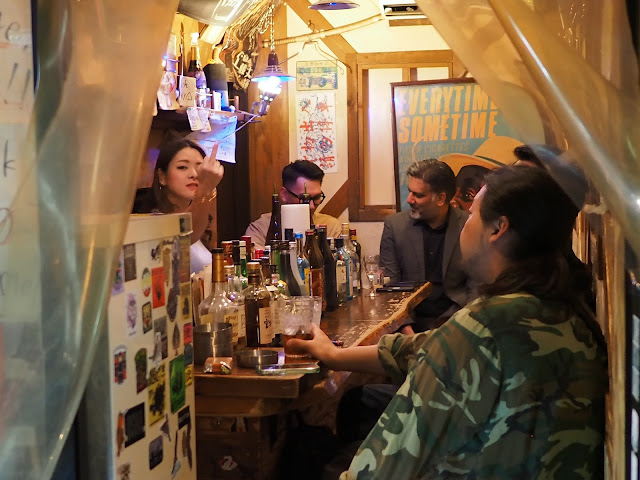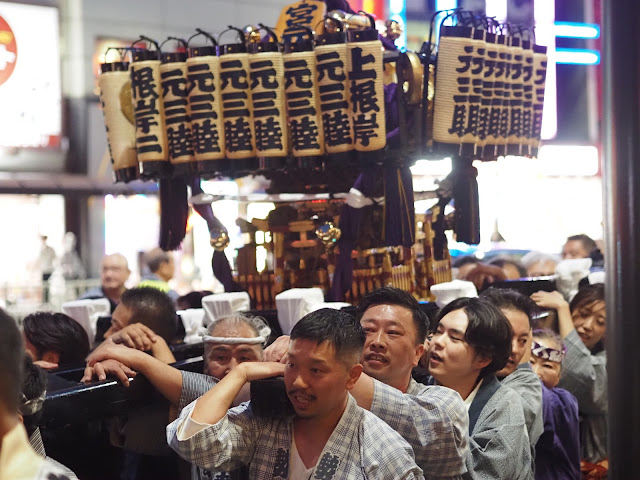It's high time
I went to Shinjuku to check out some zakkyo buildings ― the tall, narrow ones with a different business on every floor. They can be seen in virtually every neighborhood, but the ones in Shinjuku have the most striking neon signage.
Everyone visiting Tokyo can immediately sense that two-thirds of the city's service industries lie above eye level. Owing to this verticality, big-city Japan seems like a magical place with infinite possibilities just out of eyesight.
Unlocking this aspect of Japan (after six weeks in the country = slow learner), I feel like a more well-rounded traveler. But my slowness is understandable! In essence, these are vertical streets ― a strange spatial arrangement for a Westerner.
At a fifth-floor Turkish restaurant I order kavurmali but am delivered lahmacun. In true Japanese fashion, I will avoid confrontation now and ding them on Google later.
From my window perch I watch salarymen toast one another in another high rise. Across another street I spy the blue flickering of music videos as karaoke enjoyers pass the mic around.
The world's densest bar district, the Hanazono Goldengai, is a two-minute walk. More than 200 drinking establishments somehow fit into a space half the size of an American football field.








Comments
Post a Comment